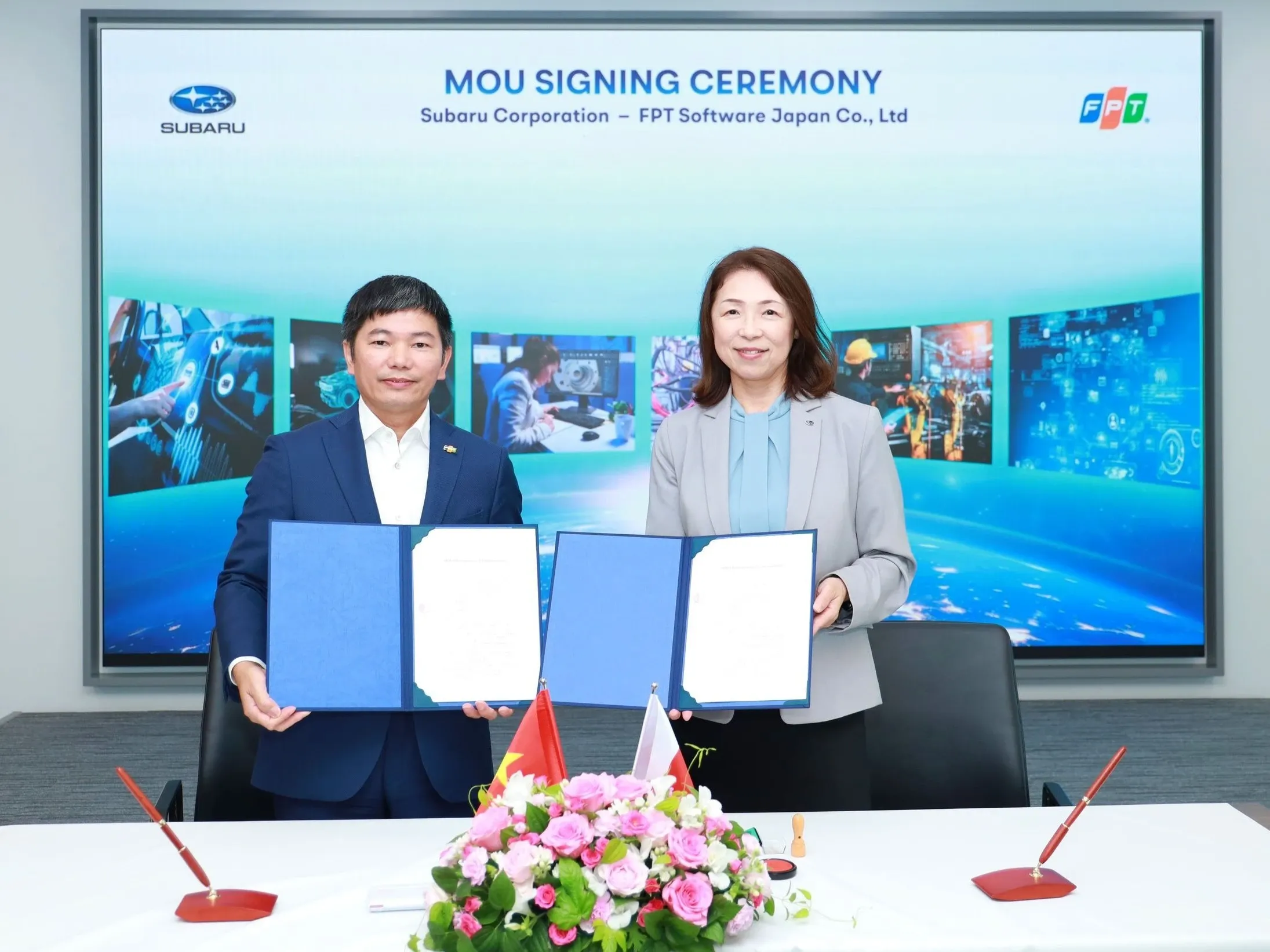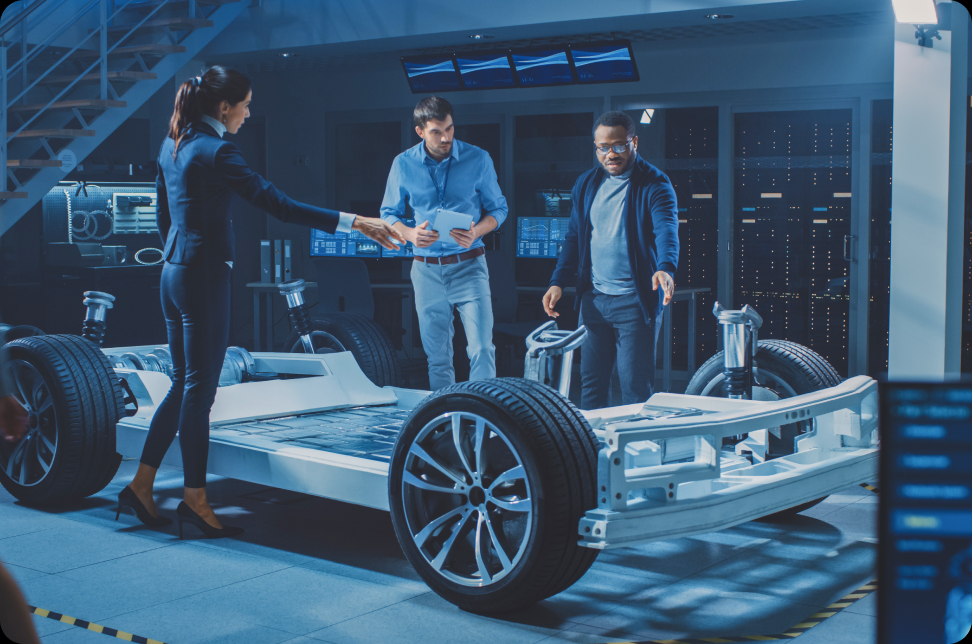

Classic AUTOSAR vs Adaptive AUTOSAR
02-11-2023

<p class="MsoNormal" align="center" style="text-align: center; line-height: 18.4px;"><span style="font-weight: bolder;"><span style="font-size: 15.5pt; line-height: 23.7667px; font-family: "Times New Roman", serif;"><font color="#ffffff"><span style="font-family: "Segoe UI";">Adaptive AUTOSAR vs Classic AUTOSAR:</span><o:p></o:p></font></span></span></p><p class="MsoNormal" align="center" style="text-align: center; line-height: 18.4px;"><span style="font-weight: bolder;"><span style="font-size: 15.5pt; line-height: 23.7667px; font-family: "Times New Roman", serif;"><font color="#ffffff"><span style="font-family: "Segoe UI";">Any possible coexistence provisions between them?</span><o:p></o:p></font></span></span></p><p class="MsoNormal" style="text-align: center;"><font color="#ffffff"><span style="font-weight: bolder;"><span style="font-family: "Times New Roman", serif;"> </span></span><img src="https://imagemaaz2023.blob.core.windows.net/images/classicvsadaptive-1.png" style="width: 1040px;"></font></p><p class="MsoNormal"><i><span style="font-family: "Segoe UI", sans-serif;"><font color="#ffffff">In 2002, the introduction of AUTOSAR aimed to standardize the development of automotive software for ECUs with deeply embedded software assumed not to require updates during its lifetime. However, the automotive software industry has undergone significant changes, requiring frequent updates. Additionally, the Classic AUTOSAR software architecture was developed on a robust real-time embedded OS, which could experience delays and interferences when the car is connected to the network, hindering real-time communication. This does not imply that Classic AUTOSAR is obsolete, rather, it requires a companion addressing the evolving demands of future vehicles. This is why Adaptive AUTOSAR was created to meet these requirements.<o:p></o:p></font></span></i></p><p class="MsoNormal"></p><p class="MsoNormal"><span style="font-family: "Segoe UI", sans-serif;"><font color="#ffffff"> </font></span></p><p class="MsoNormal"><font color="#ffffff"><span style="font-weight: bolder; text-indent: -0.25in; font-size: 1rem;"><span style="font-family: "Segoe UI", sans-serif;"><span style="font-variant-numeric: normal; font-variant-east-asian: normal; font-variant-alternates: normal; font-kerning: auto; font-optical-sizing: auto; font-feature-settings: normal; font-variation-settings: normal; font-variant-position: normal; font-weight: normal; font-stretch: normal; font-size: 7pt; line-height: normal; font-family: "Times New Roman";"> </span></span></span><span style="font-weight: bolder; text-indent: -0.25in; font-size: 1rem;"><span style="font-family: "Segoe UI", sans-serif;">WHAT IS CLASSIC AUTOSAR?</span></span></font></p><p class="MsoNormal"><span style="font-family: "Segoe UI", sans-serif; font-size: 1rem;"><font color="#ffffff">Classic AUTOSAR refers to a set of specification used for creating embedded software platforms that handle fundamental automotive functions. In a multi-ECU setting, the Classic platforms must offer BSW and RTE abstractions, enabling OEMs and vendors to implement fundamental applications. The Basic software provides useful functions to the application developer, such as services for operating systems, network communication and management, memory, and diagnostics. As a result, the software units are not affected by the hardware environment, and the developers are mostly unaware of it, as shown in Figure 1.</font></span></p><p class="MsoNormal"><font color="#ffffff"><span style="font-family: "Times New Roman", serif;"> </span><img src="https://imagemaaz2023.blob.core.windows.net/images/classicvsadaptive-2.png" style="width: 1031px;"></font></p><p class="MsoNormal"><font color="#ffffff"><span style="font-family: "Times New Roman", serif;"><v:shape id="_x0000_i1027" type="#_x0000_t75" alt="Diagram
Description automatically generated" style="width: 326.25pt; height: 183pt; visibility: visible;"><v:imagedata src="file:///C:/Users/dangth12/AppData/Local/Temp/msohtmlclip1/01/clip_image002.png" o:title="Diagram
Description automatically generated" croptop="6449f" cropleft="6209f" cropright="9060f"></v:imagedata></v:shape></span><span style="font-family: "Times New Roman", serif;"><o:p></o:p></span></font></p><p class="MsoNormal"><span style="font-family: "Times New Roman", serif;"><font color="#ffffff">Figure 1: Classic AUTOSAR Components<o:p></o:p></font></span></p><p class="MsoNormal"><span style="font-family: "Times New Roman", serif;"><font color="#ffffff"> </font></span></p><p class="MsoListParagraph" style="margin-left: 0.25in; text-indent: -0.25in;"><font color="#ffffff"><span style="font-weight: bolder;"><span style="font-family: "Segoe UI", sans-serif;"><span style="font-variant-numeric: normal; font-variant-east-asian: normal; font-variant-alternates: normal; font-kerning: auto; font-optical-sizing: auto; font-feature-settings: normal; font-variation-settings: normal; font-variant-position: normal; font-weight: normal; font-stretch: normal; font-size: 7pt; line-height: normal; font-family: "Times New Roman";"> </span></span></span><span style="font-weight: bolder;"><span style="font-family: "Segoe UI", sans-serif;">WHAT IS ADAPTIVE AUTOSAR?<o:p></o:p></span></span></font></p><p class="MsoNormal"><span style="font-family: "Segoe UI", sans-serif;"><font color="#ffffff">An adaptive platform differs from a classic platform as it can handle both basic and advanced cross-domain functions on top of multi-core multi-ECU and HPC integrated environments. Advanced functions include support for communication to both on-board and off-board systems, cross-domain computing hardware, OTA, remote repair and exchange handling, and dynamic deployment of customer functions, including driving functions.<o:p></o:p></font></span></p><p class="MsoNormal"><span style="font-family: "Segoe UI", sans-serif; font-size: 1rem;"><font color="#ffffff">Due to the segregation of software and hardware in the Adaptive AUTOSAR, tasks are distributed differently between OEMs and suppliers. Rather than ordering a functional block as a physical device in the vehicle, it is now possible to purchase only the software. By installing apps from the app store, the driver can take on the role of a software integrator.</font></span></p><p class="MsoNormal"><font color="#ffffff"><span style="font-family: "Segoe UI", sans-serif;"> </span><span style="font-family: "Segoe UI", sans-serif; font-size: 1rem;">The illustration below shows the layers of the AUTOSAR Adaptive Platform Architecture</span></font></p><p class="MsoNormal"><font color="#ffffff"><img src="https://imagemaaz2023.blob.core.windows.net/images/classicvsadaptive-3.png" style="width: 1040px;"><span style="font-family: "Times New Roman", serif;"><o:p><br></o:p></span></font></p><p class="MsoNormal"><span style="font-family: "Times New Roman", serif;"><o:p><font color="#ffffff"><br></font></o:p></span></p><p class="MsoNormal"><font color="#ffffff"><span style="font-family: "Times New Roman", serif;"><v:shape id="_x0000_i1026" type="#_x0000_t75" style="width: 393.75pt; height: 216.75pt; visibility: visible;"><v:imagedata src="file:///C:/Users/dangth12/AppData/Local/Temp/msohtmlclip1/01/clip_image003.png" o:title="" cropleft="2157f" cropright="2806f"></v:imagedata></v:shape></span><span style="font-family: "Times New Roman", serif;"><o:p></o:p></span></font></p><p class="MsoListParagraph" style="margin-left: 0.25in; text-indent: -0.25in;"><span style="font-weight: bolder; text-indent: -0.25in; font-size: 1rem;"><span style="font-family: "Segoe UI", sans-serif;"><font color="#ffffff">WHAT ARE DIFFERENCES BETWEEN CLASSIC AUTOSAR AND ADAPTIVE AUTOSAR?</font></span></span></p><p class="MsoListParagraph" style="margin-left: 0.25in; text-indent: -0.25in;"><font color="#ffffff"><span style="font-weight: bolder; text-indent: -0.25in; font-size: 1rem;"><span style="font-family: "Segoe UI", sans-serif;"><br></span></span><br></font></p><p class="MsoListParagraph" style="margin-left: 0.25in; text-indent: -0.25in;"><font color="#ffffff"><img src="https://imagemaaz2023.blob.core.windows.net/images/classicvsadaptive-4.png" style="text-indent: -0.25in; font-size: 1rem; width: 1040px;"><br></font></p><p class="MsoNormal"><span style="font-family: "Times New Roman", serif;"><font color="#ffffff">Figure 2: A Snapshot of Classic vs Adaptive AUTOSAR Architecture</font></span></p><p class="MsoNormal"><span style="font-family: "Times New Roman", serif;"><font color="#ffffff"><br></font></span></p><table class="MsoTableGrid" border="1" cellspacing="0" cellpadding="0" style="border: none;"><tbody><tr><td width="189" valign="top" style="width: 141.55pt; border: 1pt solid windowtext; padding: 0in 5.4pt;"><p class="MsoNormal"><span style="font-family: "Times New Roman", serif;"><font color="#ffffff"> </font></span></p></td><td width="170" valign="top" style="width: 127.55pt; border-top: 1pt solid windowtext; border-right: 1pt solid windowtext; border-bottom: 1pt solid windowtext; border-image: initial; border-left: none; padding: 0in 5.4pt;"><p class="MsoNormal"><span style="font-weight: bolder;"><span style="font-family: "Times New Roman", serif;"><font color="#ffffff">Classic AUTOSAR<o:p></o:p></font></span></span></p></td><td width="207" valign="top" style="width: 155.6pt; border-top: 1pt solid windowtext; border-right: 1pt solid windowtext; border-bottom: 1pt solid windowtext; border-image: initial; border-left: none; padding: 0in 5.4pt;"><p class="MsoNormal"><span style="font-weight: bolder;"><span style="font-family: "Times New Roman", serif;"><font color="#ffffff">Adaptive AUTOSAR<o:p></o:p></font></span></span></p></td></tr><tr><td width="189" valign="top" style="width: 141.55pt; border-right: 1pt solid windowtext; border-bottom: 1pt solid windowtext; border-left: 1pt solid windowtext; border-image: initial; border-top: none; padding: 0in 5.4pt;"><p class="MsoNormal"><span style="font-family: "Times New Roman", serif;"><font color="#ffffff">OS<o:p></o:p></font></span></p></td><td width="170" valign="top" style="width: 127.55pt; border-top: none; border-left: none; border-bottom: 1pt solid windowtext; border-right: 1pt solid windowtext; padding: 0in 5.4pt;"><p class="MsoNormal"><span style="font-family: "Times New Roman", serif;"><font color="#ffffff">OSEK / VDX O<o:p></o:p></font></span></p></td><td width="207" valign="top" style="width: 155.6pt; border-top: none; border-left: none; border-bottom: 1pt solid windowtext; border-right: 1pt solid windowtext; padding: 0in 5.4pt;"><p class="MsoNormal"><span style="font-family: "Times New Roman", serif;"><font color="#ffffff">POSIX PSE51<o:p></o:p></font></span></p></td></tr><tr><td width="189" valign="top" style="width: 141.55pt; border-right: 1pt solid windowtext; border-bottom: 1pt solid windowtext; border-left: 1pt solid windowtext; border-image: initial; border-top: none; padding: 0in 5.4pt;"><p class="MsoNormal"><span style="font-family: "Times New Roman", serif;"><font color="#ffffff">Main Communication Method<o:p></o:p></font></span></p></td><td width="170" valign="top" style="width: 127.55pt; border-top: none; border-left: none; border-bottom: 1pt solid windowtext; border-right: 1pt solid windowtext; padding: 0in 5.4pt;"><p class="MsoNormal"><span style="font-family: "Times New Roman", serif;"><font color="#ffffff">Signal Communication<o:p></o:p></font></span></p></td><td width="207" valign="top" style="width: 155.6pt; border-top: none; border-left: none; border-bottom: 1pt solid windowtext; border-right: 1pt solid windowtext; padding: 0in 5.4pt;"><p class="MsoNormal"><span style="font-family: "Times New Roman", serif;"><font color="#ffffff">Service- Oriented Communication<o:p></o:p></font></span></p></td></tr><tr><td width="189" valign="top" style="width: 141.55pt; border-right: 1pt solid windowtext; border-bottom: 1pt solid windowtext; border-left: 1pt solid windowtext; border-image: initial; border-top: none; padding: 0in 5.4pt;"><p class="MsoNormal"><span style="font-family: "Times New Roman", serif;"><font color="#ffffff">Development Language<o:p></o:p></font></span></p></td><td width="170" valign="top" style="width: 127.55pt; border-top: none; border-left: none; border-bottom: 1pt solid windowtext; border-right: 1pt solid windowtext; padding: 0in 5.4pt;"><p class="MsoNormal"><span style="font-family: "Times New Roman", serif;"><font color="#ffffff">C<o:p></o:p></font></span></p></td><td width="207" valign="top" style="width: 155.6pt; border-top: none; border-left: none; border-bottom: 1pt solid windowtext; border-right: 1pt solid windowtext; padding: 0in 5.4pt;"><p class="MsoNormal"><span style="font-family: "Times New Roman", serif;"><font color="#ffffff">C++<o:p></o:p></font></span></p></td></tr><tr><td width="189" valign="top" style="width: 141.55pt; border-right: 1pt solid windowtext; border-bottom: 1pt solid windowtext; border-left: 1pt solid windowtext; border-image: initial; border-top: none; padding: 0in 5.4pt;"><p class="MsoNormal"><span style="font-family: "Times New Roman", serif;"><font color="#ffffff">Application Execution Method<o:p></o:p></font></span></p></td><td width="170" valign="top" style="width: 127.55pt; border-top: none; border-left: none; border-bottom: 1pt solid windowtext; border-right: 1pt solid windowtext; padding: 0in 5.4pt;"><p class="MsoNormal"><span style="font-family: "Times New Roman", serif;"><font color="#ffffff">Directly execute code on ROM<o:p></o:p></font></span></p></td><td width="207" valign="top" style="width: 155.6pt; border-top: none; border-left: none; border-bottom: 1pt solid windowtext; border-right: 1pt solid windowtext; padding: 0in 5.4pt;"><p class="MsoNormal"><span style="font-family: "Times New Roman", serif;"><font color="#ffffff">Load to RAM from ROM, then execute<o:p></o:p></font></span></p></td></tr><tr><td width="189" valign="top" style="width: 141.55pt; border-right: 1pt solid windowtext; border-bottom: 1pt solid windowtext; border-left: 1pt solid windowtext; border-image: initial; border-top: none; padding: 0in 5.4pt;"><p class="MsoNormal"><span style="font-family: "Times New Roman", serif;"><font color="#ffffff">Software Updates in Run-time<o:p></o:p></font></span></p></td><td width="170" valign="top" style="width: 127.55pt; border-top: none; border-left: none; border-bottom: 1pt solid windowtext; border-right: 1pt solid windowtext; padding: 0in 5.4pt;"><p class="MsoNormal"><span style="font-family: "Times New Roman", serif;"><font color="#ffffff">No<o:p></o:p></font></span></p></td><td width="207" valign="top" style="width: 155.6pt; border-top: none; border-left: none; border-bottom: 1pt solid windowtext; border-right: 1pt solid windowtext; padding: 0in 5.4pt;"><p class="MsoNormal"><span style="font-family: "Times New Roman", serif;"><font color="#ffffff">Yes<o:p></o:p></font></span></p></td></tr><tr><td width="189" valign="top" style="width: 141.55pt; border-right: 1pt solid windowtext; border-bottom: 1pt solid windowtext; border-left: 1pt solid windowtext; border-image: initial; border-top: none; padding: 0in 5.4pt;"><p class="MsoNormal"><span style="font-family: "Times New Roman", serif;"><font color="#ffffff">Task Scheduling<o:p></o:p></font></span></p></td><td width="170" valign="top" style="width: 127.55pt; border-top: none; border-left: none; border-bottom: 1pt solid windowtext; border-right: 1pt solid windowtext; padding: 0in 5.4pt;"><p class="MsoNormal"><span style="font-family: "Times New Roman", serif;"><font color="#ffffff">Static Scheduling<o:p></o:p></font></span></p></td><td width="207" valign="top" style="width: 155.6pt; border-top: none; border-left: none; border-bottom: 1pt solid windowtext; border-right: 1pt solid windowtext; padding: 0in 5.4pt;"><p class="MsoNormal"><span style="font-family: "Times New Roman", serif;"><font color="#ffffff">Dynamic Scheduling<o:p></o:p></font></span></p></td></tr><tr><td width="189" valign="top" style="width: 141.55pt; border-right: 1pt solid windowtext; border-bottom: 1pt solid windowtext; border-left: 1pt solid windowtext; border-image: initial; border-top: none; padding: 0in 5.4pt;"><p class="MsoNormal"><span style="font-family: "Times New Roman", serif;"><font color="#ffffff">Real-time Capability<o:p></o:p></font></span></p></td><td width="170" valign="top" style="width: 127.55pt; border-top: none; border-left: none; border-bottom: 1pt solid windowtext; border-right: 1pt solid windowtext; padding: 0in 5.4pt;"><p class="MsoNormal"><span style="font-family: "Times New Roman", serif;"><font color="#ffffff">Extremely High (microsecond unit)<o:p></o:p></font></span></p></td><td width="207" valign="top" style="width: 155.6pt; border-top: none; border-left: none; border-bottom: 1pt solid windowtext; border-right: 1pt solid windowtext; padding: 0in 5.4pt;"><p class="MsoNormal"><span style="font-family: "Times New Roman", serif;"><font color="#ffffff">High (millisecond unit)<o:p></o:p></font></span></p></td></tr><tr><td width="189" valign="top" style="width: 141.55pt; border-right: 1pt solid windowtext; border-bottom: 1pt solid windowtext; border-left: 1pt solid windowtext; border-image: initial; border-top: none; padding: 0in 5.4pt;"><p class="MsoNormal"><span style="font-family: "Times New Roman", serif;"><font color="#ffffff">Processing Power<o:p></o:p></font></span></p></td><td width="170" valign="top" style="width: 127.55pt; border-top: none; border-left: none; border-bottom: 1pt solid windowtext; border-right: 1pt solid windowtext; padding: 0in 5.4pt;"><p class="MsoNormal"><span style="font-family: "Times New Roman", serif;"><font color="#ffffff">Low (~ 1000 DMIPs)<o:p></o:p></font></span></p></td><td width="207" valign="top" style="width: 155.6pt; border-top: none; border-left: none; border-bottom: 1pt solid windowtext; border-right: 1pt solid windowtext; padding: 0in 5.4pt;"><p class="MsoNormal"><span style="font-family: "Times New Roman", serif;"><font color="#ffffff">High (> 20,000 DMIPs)<o:p></o:p></font></span></p></td></tr><tr><td width="189" valign="top" style="width: 141.55pt; border-right: 1pt solid windowtext; border-bottom: 1pt solid windowtext; border-left: 1pt solid windowtext; border-image: initial; border-top: none; padding: 0in 5.4pt;"><p class="MsoNormal"><span style="font-family: "Times New Roman", serif;"><font color="#ffffff">Safety Requirements<o:p></o:p></font></span></p></td><td width="170" valign="top" style="width: 127.55pt; border-top: none; border-left: none; border-bottom: 1pt solid windowtext; border-right: 1pt solid windowtext; padding: 0in 5.4pt;"><p class="MsoNormal"><span style="font-family: "Times New Roman", serif;"><font color="#ffffff">Max. ASIL D<o:p></o:p></font></span></p></td><td width="207" valign="top" style="width: 155.6pt; border-top: none; border-left: none; border-bottom: 1pt solid windowtext; border-right: 1pt solid windowtext; padding: 0in 5.4pt;"><p class="MsoNormal"><span style="font-family: "Times New Roman", serif;"><font color="#ffffff">Min. ASIL B<o:p></o:p></font></span></p></td></tr><tr><td width="189" valign="top" style="width: 141.55pt; border-right: 1pt solid windowtext; border-bottom: 1pt solid windowtext; border-left: 1pt solid windowtext; border-image: initial; border-top: none; padding: 0in 5.4pt;"><p class="MsoNormal"><span style="font-family: "Times New Roman", serif;"><font color="#ffffff">Functionality<o:p></o:p></font></span></p></td><td width="170" valign="top" style="width: 127.55pt; border-top: none; border-left: none; border-bottom: 1pt solid windowtext; border-right: 1pt solid windowtext; padding: 0in 5.4pt;"><p class="MsoNormal"><span style="font-family: "Times New Roman", serif;"><font color="#ffffff">Fixed<o:p></o:p></font></span></p></td><td width="207" valign="top" style="width: 155.6pt; border-top: none; border-left: none; border-bottom: 1pt solid windowtext; border-right: 1pt solid windowtext; padding: 0in 5.4pt;"><p class="MsoNormal"><span style="font-family: "Times New Roman", serif;"><font color="#ffffff">Flexible<o:p></o:p></font></span></p></td></tr></tbody></table><p class="MsoNormal"><span style="font-family: "Segoe UI", sans-serif;"><font color="#ffffff">Table 1: Comparison Table between Classic vs Adaptive AUTOSAR<o:p></o:p></font></span></p><p class="MsoNormal"><span style="font-family: "Segoe UI", sans-serif; font-size: 1rem;"><font color="#ffffff"><br></font></span></p><p class="MsoNormal"><span style="font-family: "Segoe UI", sans-serif; font-size: 1rem;"><font color="#ffffff">While the classic standard has served the basic automotive functions of the past and present, the forthcoming functions with Internet of Things (IoT) and autonomous driving will be shouldered by the adaptive standard.</font></span></p><p class="MsoNormal"><span style="font-family: "Segoe UI", sans-serif;"><font color="#ffffff"><o:p></o:p></font></span></p><p class="MsoNormal"><span style="font-family: "Times New Roman", serif;"><font color="#ffffff"> </font></span></p><p class="MsoListParagraph" style="margin-left: 0.25in; text-indent: -0.25in;"><span style="font-weight: bolder;"><span style="font-family: "Segoe UI", sans-serif;"><font color="#ffffff">ANY POSSIBLE COEXISTENCE PROVISIONS BETWEEN CLASSIC AND ADAPTIVE AUTOSAR?<o:p></o:p></font></span></span></p><p class="MsoNormal"><span style="font-family: "Segoe UI", sans-serif; font-size: 1rem;"><font color="#ffffff">The Adaptive AUTOSAR system is not designed to replace the Classic AUTOSAR platform, rather, to enable both applications to coexist and collaborate between two platforms.</font></span></p><p class="MsoNormal"><span style="font-family: "Segoe UI", sans-serif; font-size: 1rem;"><font color="#ffffff">The Classic platform is suitable for scenarios requiring high security and real-time applications, so embedded software functions should be deployed on this platform. Conversely, the Adaptive platform is designed for parallel processing of big data, and high-performance computing functions should be run on it. As autonomous driving technology, IoT, and cloud technology continue to advance, Adaptive AUTOSAR is emerging to meet both current and future automotive technology needs. With its various architectures and complements, it can support a range of adaptive deployments, complex microcontrollers, and the interaction of different non-AUTOSAR systems.</font></span></p><p class="MsoNormal"><font color="#ffffff"><img src="https://imagemaaz2023.blob.core.windows.net/images/classicvsadaptive-5.png" style="width: 1040px;"><span style="font-family: "Times New Roman", serif;"><o:p><br></o:p></span></font></p><p class="MsoNormal"><font color="#ffffff"><span style="font-family: "Times New Roman", serif;"><v:shape id="Picture_x0020_1" o:spid="_x0000_i1025" type="#_x0000_t75" alt="Timeline
Description automatically generated" style="width: 373.5pt; height: 175.5pt; visibility: visible;"><v:imagedata src="file:///C:/Users/dangth12/AppData/Local/Temp/msohtmlclip1/01/clip_image005.png" o:title="Timeline
Description automatically generated" croptop="2680f" cropleft="4066f" cropright="3831f"></v:imagedata></v:shape></span><span style="font-family: "Times New Roman", serif;"><o:p></o:p></span></font></p><p class="MsoNormal"><span style="font-family: "Segoe UI", sans-serif;"><font color="#ffffff">Figure 3: An example of Co-Existing Scenario of Classic and Adaptive AUTOSAR<o:p></o:p></font></span></p><p class="MsoNormal"><span style="font-family: "Segoe UI", sans-serif; font-size: 1rem;"><font color="#ffffff"><br></font></span></p><p class="MsoNormal"><span style="font-family: "Segoe UI", sans-serif; font-size: 1rem;"><font color="#ffffff">Adaptive AUTOSAR introduces a significant change to the vehicle architecture by utilizing Ethernet for communication network. While Adaptive ECUs will use Ethernet, Classic ECUs will continue to use vehicle BUS networks like CAN or LIN.</font></span></p><p class="MsoNormal"><span style="font-family: "Segoe UI", sans-serif; font-size: 1rem;"><font color="#ffffff">To enable communication between Classic and Adaptive ECUs, a gateway ECU is utilized. The Classic ECU acts as a gateway by packaging the signals from the BUS system into a service that Adaptive ECU can read.</font></span></p><p class="MsoNormal"></p><p class="MsoNormal"><span style="font-family: "Segoe UI", sans-serif;"><font color="#ffffff">However, a configuration format conversion is necessary in this case. If the Classic ECU is solely signal-based and cannot package the signal into a service, it converts the signals into UDP frames and transmits them over Ethernet. The Adaptive ECU is equipped with a 'signal to service' mapping feature to convert UDP frames into services.<o:p></o:p></font></span></p><p class="MsoNormal"><span style="font-family: "Times New Roman", serif;"><font color="#ffffff"> </font></span></p><p class="MsoListParagraph" style="margin-left: 0.25in; text-indent: -0.25in;"><font color="#ffffff"><span style="font-weight: bolder;"><span style="font-family: "Segoe UI", sans-serif;"><span style="font-variant-numeric: normal; font-variant-east-asian: normal; font-variant-alternates: normal; font-kerning: auto; font-optical-sizing: auto; font-feature-settings: normal; font-variation-settings: normal; font-variant-position: normal; font-weight: normal; font-stretch: normal; font-size: 7pt; line-height: normal; font-family: "Times New Roman";"> </span></span></span><span style="font-weight: bolder;"><span style="font-family: "Segoe UI", sans-serif;">WHAT DOES THE FUTURE HOLD FOR AUTOSAR?<o:p></o:p></span></span></font></p><p class="MsoNormal"><span style="font-family: "Segoe UI", sans-serif;"><font color="#ffffff">The Classic platform is designed for functional ECUs whose deeply embedded software, whereas the Adaptive platform is geared towards enabling autonomous driving functionality, representing a futuristic approach. Both platforms are equally essential to the automotive industry.<o:p></o:p></font></span></p><p class="MsoNormal"><font color="#ffffff"><span style="font-family: "Segoe UI", sans-serif;"> </span><span style="font-family: "Segoe UI", sans-serif; font-size: 1rem;">While it is possible that the Adaptive AUTOSAR platform may eventually be the only platform used for ECU software development, it is too early to predict this. For now, automotive engineers can merge these two worlds by utilizing flexible gateways and maximizing their potential.</span></font></p><p class="MsoNormal"><span style="font-family: "Times New Roman", serif;"><font color="#ffffff"> </font></span></p><p class="MsoNormal"><span style="font-weight: bolder;"><span style="font-family: "Times New Roman", serif;"><font color="#ffffff">Reference Links:<o:p></o:p></font></span></span></p><p class="MsoNormal"><font color="#ffffff"><a href="https://www.autosar.org/standards/adaptive-platform"><span style="font-family: "Times New Roman", serif;">https://www.autosar.org/standards/adaptive-platform</span></a><span style="font-family: "Times New Roman", serif;"><o:p></o:p></span></font></p><p class="MsoNormal" align="center" style="text-align: center;"></p><p class="MsoNormal"><a href="https://www.autosar.org/standards/classic-platform"><span style="font-family: "Times New Roman", serif;"><font color="#ffffff">https://www.autosar.org/standards/classic-platform</font></span></a></p>





